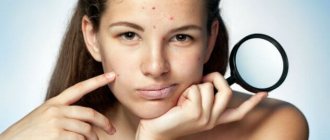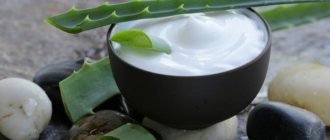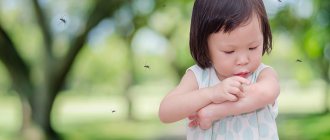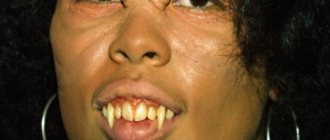Why do some people get a beautiful tan in the sun, while others get itchy blisters and a red rash? Ultraviolet radiation can cause various allergic reactions; they must be distinguished in order to properly treat the disease.
How do solar urticaria and photodermatoses occur and how to treat them? Doctor of Medical Sciences, Professor of the Department of Skin and Venereal Diseases named after. V. A. Rakhmanova Sechenov University, PhD (Great Britain) Elena Borzova.
From blisters to shock
Elena Borzova: Solar urticaria occurs quite quickly, often less than 5 minutes after exposure of the skin to solar radiation. Much less often - within 20 minutes. For example, people with increased sensitivity to solar radiation (photosensitivity) may experience solar urticaria after just a few minutes in the open sun. Itchy blisters appear on the skin. However, solar urticaria resolves quickly, after 15-30 minutes, up to a maximum of 1 hour. But, once it appears, solar urticaria can occur again. Patients with solar urticaria should go out into the open sun, for example, go on a picnic, and an immediate reaction occurs. Mostly solar urticaria occurs on exposed areas of the body. And since solar urticaria is possible as a reaction to various ranges of ultraviolet radiation, in the summer sometimes thin clothing also does not protect against the occurrence of itchy blisters. It is possible for ultraviolet rays to penetrate through window glass indoors or through car windows.
Sometimes there are more severe symptoms: headache, rapid heartbeat, general deterioration in health up to fainting, and in the most severe cases anaphylactic shock is possible. Therefore, such patients should be promptly examined and diagnosed by specialists.
Solar urticaria can occur over a long period of time, chronically. For some, rashes predominate in the spring and summer, while for others they may occur throughout the year. But they are always caused by ultraviolet radiation. In some patients, the disease may resolve on its own, i.e., spontaneous remission is observed.
— How to distinguish solar urticaria from a sunburn or other types of allergies to sunlight?
— There are various photodermatoses - diseases with skin damage that occur under the influence of ultraviolet radiation. For example, photoallergic contact dermatitis is an inflammatory process of the skin that occurs at sites of combined exposure to a drug or cosmetic product and ultraviolet radiation in individuals with hypersensitivity to these drugs. Unlike solar urticaria, photoallergic contact dermatitis usually occurs over a more delayed period, several hours after intense exposure to ultraviolet radiation. And it takes much longer. A detailed differential diagnosis requires specialist consultation and further examination, including phototesting.
—Who is more likely to have reactions to solar radiation?
- People most often get sick between the ages of 20 and 40. The risk is higher if relatives have had similar reactions to solar radiation or if they are taking certain medications. Overall, this is an understudied area.
— What happens to the body during solar urticaria? Why does this reaction to the sun occur?
— It is assumed that under the influence of solar radiation the structure of some proteins in the skin changes and they become photoallergens. The altered proteins can cause the production of immunoglobulins E, which are found on the surface of mast cells in the skin. As a result of this activation of mast cells, they begin to release histamine and other mediators, which cause the formation of an itchy blister on the skin.
How to deal with the disease yourself at home
The use of so-called “traditional methods” should be carried out in combination with treatment from a specialist and certainly after consultation with a doctor. As mentioned above, the cause of an allergic reaction is the use of certain medications, the use of products with photosensitizing substances, hypovitaminosis and various pathologies of internal organs.
Traditional methods of treatment include such remedies and procedures as: ointments, decoctions, compresses, baths, oils, tinctures.
Ointments for photodermatitis relieve itching, have a calming effect on the skin and heal areas of local manifestations (burns).
St. John's wort ointment
In a meat grinder or blender, grind 45 g (about three heaped tablespoons) of fresh St. John's wort and mix the substance from the plant with one tablespoon of butter (15 grams). The cream must be applied twice during the day, in the morning when you go to bed and in the evening before bed.
Starch-based ointment
Mix until smooth porridge: starch (rice), glycerin and milk - all ingredients, one tablespoon each. This remedy should be used before going to bed.
Herbal mixture of buckthorn and St. John's wort
Medicinal herbs such as buckthorn and St. John's wort will help relieve the symptoms of allergic disease from the sun. Tincture ingredients:
- a) Buckthorn bark – 75g (five tablespoons).
- b) St. John's wort - 75g (five tablespoons).
- c) Aspen buds – 30g (two tablespoons).
Pour boiling water (two glasses) in a ceramic or glass container over the crushed and mixed ingredients and let them steep for twenty minutes. In this case, the dishes must be wrapped in a towel. After time, the tincture is cooled and filtered. If children have allergies, take the dose twice, five milliliters each; if adults have allergies, take it three times during the daily dose.
Compresses based on cabbage leaves
A glass of boiling water and a few cabbage leaves is all you need to prepare a compress. The leaves of the plant are dipped in boiling water for a couple of seconds, this will soften them. Cooled cabbage leaves are applied to the affected areas of the skin, then they are fixed with a bandage and left for half an hour. This treatment will help quickly cool the skin, relieve swelling and unpleasant pain.
Bath based on a series
To reduce itching during an allergic reaction, a series-based bath is used. To prepare it, you need to take dry string (two tablespoons) and pour a glass of boiling water. Place the solution in a water bath and leave for a quarter of an hour, the main thing is not to let it boil. Strain the solution and add to a bath with warm water. The procedure should be completed in about twenty minutes. The frequency of the procedure is daily for ten days with a break of several weeks.
When are oranges dangerous?
— I heard that some cosmetics, perfumes, and medications can also provoke reactions to solar radiation.
— Cosmetics and medications can trigger photoallergic contact dermatitis. The most common allergic reactions occur to sunscreens and non-steroidal anti-inflammatory drugs. It can be triggered by a number of drugs in cardiology, for the treatment of diabetes, some diuretics, antibiotics, especially doxycycline, tetracycline, fluoroquinolones, sulfonamides, some oral contraceptives and even some antihistamines. In addition, perfumes based on musk and essential oils, for example, bergamot, orange. Therefore, it is recommended not to use perfume if you plan to sunbathe or visit the beach.
- How so? Sunscreens are designed to protect against the sun, but can cause problems when tanning.
“Some of them really can.” After all, such products are a composition of many ingredients, some of which cause reactions in people with hypersensitivity to these components. Therefore, it is important, if a reaction to photoprotective agents occurs, to consult a specialist, rule out contact dermatitis and choose a safe drug.
By the way, some vegetables and fruits and plants can also cause photoallergic reactions. These are angelica, hogweed, and products include celery, parsley, fennel, figs, and some citrus fruits. Moreover, in people with high sensitivity, even touching the face can cause a reaction if trace amounts remain on the fingertips after contact with, say, celery or parsley.
Photosensitivity can be accompanied by some diseases, such as lupus erythematosus, porphyria and pellagra.
— Is solar urticaria possible in our mid-latitudes or does it only appear in southern resorts?
— Solar urticaria is a rare variant of urticaria, provoked by ultraviolet radiation of various ranges: ultraviolet rays of the A and B spectrum, as well as the visible spectrum. Of course, it is also possible in mid-latitudes. A study was conducted in Scotland that showed that even in northern latitudes the disease, although rare, does occur.
First aid for fainting
If a person with ultraviolet radiation intolerance spends a long time in the open sun, his blood pressure often drops and faints.
Usually this happens suddenly and unexpectedly for him, so only other people can help in this case.
In order to help a person come to his senses, you need to take the following actions:
- move it to the shade, or create an artificial shelter over it;
- raise your legs, thereby increasing blood flow to the head;
- sprinkle cool water on the face, neck, chest;
- It is advisable to bring a cotton swab soaked in ammonia to your nose.
Most often, after these events the patient comes to his senses. But if fainting lasts a long time, or it occurs in a child or pregnant woman, you should call an ambulance. There are situations when a person must stay in the hospital for a couple of hours.
Selfie for the doctor
— How are solar urticaria and photodermatoses treated?
— If symptoms occur, you should consult a specialist as soon as possible for differential diagnosis. To confirm solar urticaria and other photodermatoses, phototesting is mandatory. Phototesting is used to determine the range of solar radiation that causes the disease. For photoallergic contact dermatitis, photopatch tests are used with drugs that are suspected of causing this reaction.
Many patients come to an allergist-immunologist or dermatologist when they return from vacation, several weeks after the occurrence of an allergic reaction. In such a situation, it is quite difficult to interpret the symptoms. Therefore, it is advisable to photograph changes in the skin if they occur while relaxing on the beach and contact a specialist in a timely manner.
Treatment also has fundamental differences. For urticaria, use non-sedating antihistamines; for chronic cases, more specialized approaches are possible. Phototherapy is successfully carried out in our clinic; it is an effective method and involves exposure to increasing doses of ultraviolet radiation to develop tolerance. With solar urticaria, severe variants are also possible, including systemic reactions of the body, which may require emergency care. In the case of photoallergic contact dermatitis, it is necessary to exclude the culprit photoallergen, and topical glucocorticosteroids and other drugs are used.
Technique for diagnosing sun allergy
There is no need to treat yourself; at the first signs of illness, make an appointment with a doctor - a specialist. A dermatologist will determine the basis for the occurrence of photodermatitis using allergological tests and prescribe how to treat sun allergies.
At your doctor’s appointment you will have the following treatment protocol:
- The dermatologist will interview the patient . The questions will concern the first signs of allergies and symptoms of the disease. The doctor will ask about the patient’s childhood diseases, hereditary family pathologies and harmful factors in the workplace;
- When examining the patient, the dermatologist will pay attention and palpate (feel) the skin for the breadth and depth of the lesions;
- Depending on the nature of photodermatitis, the specialist will prescribe allergy tests if he suspects an allergic form of the disease.
Research into the causes of the disease involves taking a general, immunological and biochemical blood test, diagnosing the kidneys, liver, and gastrointestinal tract. An examination of internal organs using ultrasound will also be prescribed.
Sun safety rules
- Try not to sunbathe during the most active solar radiation, from 10-11 to 16 hours.
- Before going to the beach, it is advisable not to use deodorants, creams, or perfumes.
- Be sure to use sunscreens with a high protection factor.
- Before sunbathing, avoid foods that may cause photoallergic reactions.
- If possible, wear clothing that protects from active solar radiation. If a person is confirmed to have solar urticaria, they are advised to avoid exposure to sunlight and wear clothing and hats that protect from sunlight.
- If skin manifestations occur, contact a specialist.
Link to publication: aif.ru
Healthy foods
To prevent the occurrence of unwanted allergic reactions, you need to adjust your diet:
- eat a large amount of foods containing vitamins C, B and E. It is especially useful to eat fresh berries and fruits - blueberries, pomegranates, currants;
- drink a lot of clean water. Thanks to this, it will be possible to cleanse the body of toxic substances. At the same time, it is recommended to completely exclude carbonated drinks, alcohol and juices.
- When on vacation, be careful about exotic dishes. If you are highly sensitive to sunlight, such experiments should be avoided.
Folk remedies
The first symptoms of allergies can be relieved with folk remedies:
- Application of cabbage. It is necessary to lightly beat a cabbage leaf so that it begins to release juice and apply it to the affected areas of the skin.
- Compresses. Apply compresses made from sliced or grated potatoes and cucumbers. Keep it for about half an hour.
- Celandine and wormwood. Pour the young wormwood herb with alcohol and leave for three days. Use the resulting tincture to wipe the rash areas. Take baths with celandine infusion.










